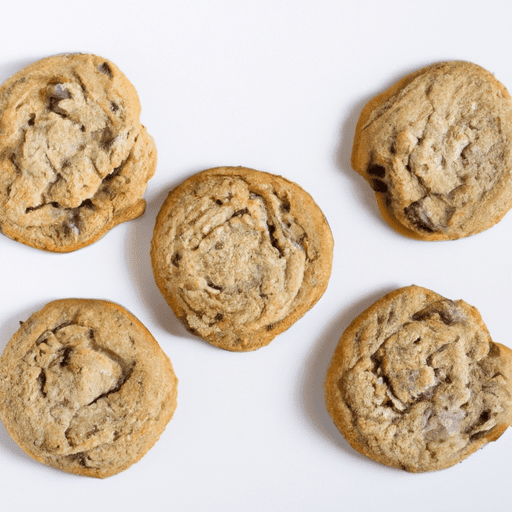The Wonderful World of Cookies
Who can resist the allure of a freshly baked cookie? These sweet treats have a way of bringing joy and comfort with every bite. Whether you prefer classic chocolate chip or fancy macadamia nut, there’s no denying that cookies hold a special place in our hearts and taste buds.
A Burst of Flavor
One of the most delightful aspects of cookies is their wide range of flavors. From buttery and toffee-like to rich and fudgy, there is a cookie to satisfy every craving. The combination of sweet and savory, the subtle notes of vanilla or the richness of cocoa, all work together to create a symphony of taste.
Versatile and Delicious
Cookies are not just a delicious treat enjoyed on their own; they also play a starring role in many dessert recipes. Crumbled cookies make a perfect crust for cheesecakes and pie fillings. They can be used as a delightful addition to ice cream, transforming it into an indulgent dessert. And let’s not forget the joy of dunking a cookie into a glass of cold milk!
Nutritional Gems
While cookies may not be considered health food, they can still offer some nutritional benefits. Many cookies contain ingredients such as nuts, oats, or dried fruits, adding a dose of fiber and essential nutrients. Additionally, the act of baking cookies from scratch can bring joy and relaxation, fostering mental well-being.
However, moderation is key when it comes to indulging in cookies. They are often high in sugar and calories, so it’s best to savor them as an occasional treat rather than a dietary staple.
A Brief History
The exact origin of the cookie remains a bit of a mystery, but these delightful treats have been enjoyed for centuries. The word “cookie” is derived from the Dutch word “koekje,” which translates to “little cake.” Early cookies were likely created as a way to test oven temperatures before baking larger cakes.
Cookies gained popularity in Europe during the Middle Ages and Renaissance. They quickly became a favorite among sailors, who relied on these sturdy treats for sustenance during long voyages. As European settlers brought their baking traditions to America, cookies became a beloved part of American cuisine.
Fun Cookie Facts
- The chocolate chip cookie was invented by Ruth Graves Wakefield in the 1930s, when she ran out of chocolate for her butter cookies and decided to chop up a chocolate bar instead.
- The world’s largest cookie weighed more than 40,000 pounds and was over 100 feet in diameter. It was made in Pennsylvania in 2003.
- December 4th is National Cookie Day in the United States, a perfect excuse to bake and enjoy your favorite cookies.
Now that you’re armed with cookie knowledge, it’s time to embrace the joy of baking and embark on a delicious cookie adventure. Whether you’re sharing them with loved ones or indulging in a moment of sweet solitude, cookies will always be there to bring a smile to your face and warmth to your soul. Happy baking!
References:
Origin and History:
- The term “cookie” comes from the Dutch word “koekie,” which means little cake.
- Cookies have been around for centuries, with evidence of their existence dating back to 7th-century Persia.
- The first recorded recipe for cookies appears in a Dutch cookbook from the late 16th century.
Common Uses:
- Cookies are widely enjoyed as sweet treats and desserts.
- They are commonly served with milk, tea, or coffee.
- Cookies are often homemade but are also popular pre-packaged snacks.
Nutritional Benefits:
- Cookies are primarily enjoyed for their taste and texture and may not offer significant nutritional benefits.
- The nutritional composition of cookies varies but they generally contain carbohydrates, fats, and sugars.
- Some variations incorporate healthy additions such as nuts, oats, or dried fruits, which can increase their nutritional value slightly.
Unique Properties:
- Cookies come in various shapes, sizes, and textures, ranging from soft and chewy to crispy and crunchy.
- Many different flavors and ingredients can be used to make cookies, allowing for a wide variety of options.
- Popular types of cookies include chocolate chip, sugar, oatmeal, peanut butter, and shortbread.
Historical Significance:
- Cookies have cultural significance in different countries and are often associated with specific holidays or celebrations.
- In the United States, the tradition of leaving cookies for Santa Claus on Christmas Eve is popular.
- Cookies have played a role in wartime as well. During World War I and II, women would send cookies to soldiers to boost morale.
Please note that while cookies are generally enjoyed in moderation, excessive consumption of sugary cookies can have negative impacts on overall health and contribute to weight gain and dental problems.




Use the share button below if you liked it.
It makes me smile, when I see it.